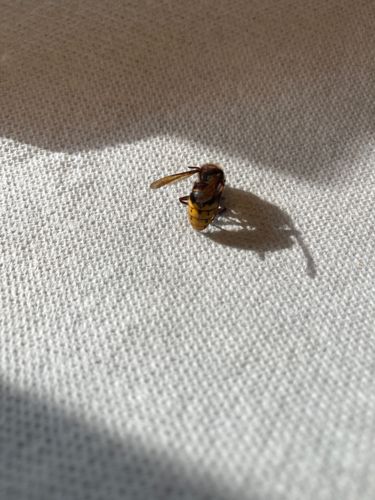European Hornet
Scientific Name: Vespa crabro
Order & Family: Order: Hymenoptera, Family: Vespidae
Size: Workers typically range from 18-25 mm (0.7-1 inch) in length. Queens are larger, reaching 25-35 mm (1-1.4 inches).

Natural Habitat
Found in temperate regions of Europe, parts of Asia, and introduced to eastern North America. They prefer wooded areas, forests, and suburban environments where they can find suitable nesting sites (hollow trees, stumps, attics, sheds, wall voids) and foraging grounds.
Diet & Feeding
Adult European hornets primarily feed on nectar, tree sap, and fallen fruit. They also prey on various insects, including flies, grasshoppers, crickets, and yellowjackets, which they capture to feed their larvae. The larvae, in turn, excrete a sugary substance that the adults consume.
Behavior Patterns
European hornets are social insects that live in colonies. They build large paper nests, typically in hollow trees, attics, or wall voids. They are generally less aggressive than yellowjackets but will sting if their nest is disturbed or if they feel threatened. Queens emerge in spring to start new colonies, and the colony grows throughout the summer, producing new queens and males in late summer/fall. The old queen and workers die off with the first hard frost, and new queens overwinter to start the cycle again.
Risks & Benefits
Risks: European hornets can sting, and their sting is painful, causing localized swelling, redness, and itching. Multiple stings or stings to allergic individuals can lead to more severe reactions, including anaphylaxis, which can be life-threatening. Benefits: They are beneficial predators, controlling populations of various insect pests, including other stinging insects like yellowjackets. They also contribute to pollination by visiting flowers for nectar.
Identified on: 8/17/2025